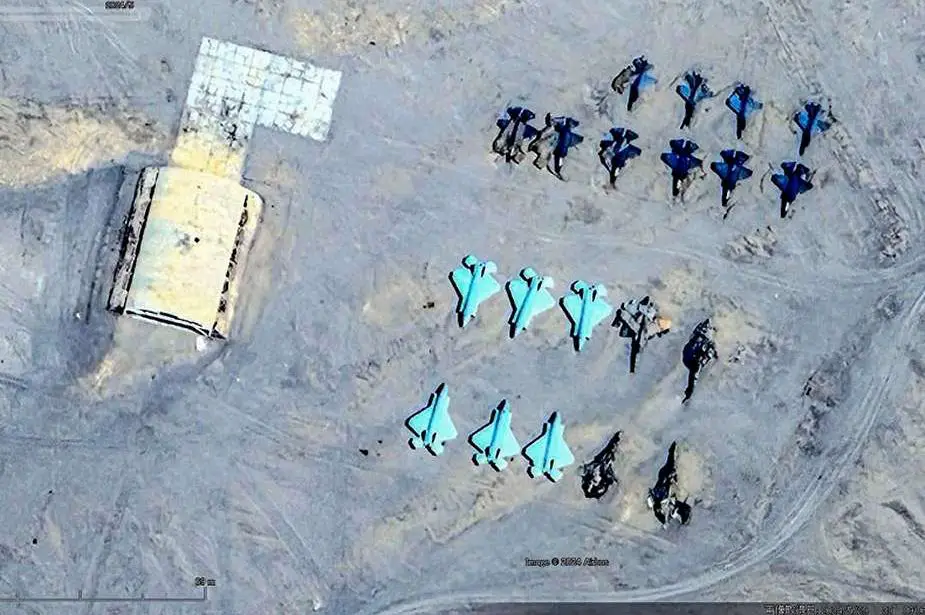Breaking News
China Trains to Simulate Attacks Against US Fighter Jets Using Mockups in the Xinjiang Desert.
Recent satellite images have revealed that the Chinese military is conducting training exercises in the Taklamakan Desert, Xinjiang, using mock-ups of U.S. military assets. These include mockups of American aircraft carriers, fighter jets like the F-35 and F-22, and destroyers such as the Arleigh Burke-class. The People’s Liberation Army Air Force (PLAAF) and Navy use these mock-ups to practice air strikes and other military maneuvers.
Follow Army Recognition on Google News at this link

Satellite images published on the X Account of @clashreport show mock-ups of U.S. F-22 and F-35 fighter jets used to simulate attacks conducted by the Chinese Air Force. (Picture source: X Account @ClashReport)
The construction of these mock targets is part of China's broader strategy to enhance its military capabilities, particularly its anti-ship ballistic missile program. These training sites include sophisticated models equipped with sensors and instrumentation to simulate realistic combat scenarios. The use of detailed replicas, such as the life-size model of the USS Gerald R. Ford aircraft carrier, underscores China’s focus on developing effective countermeasures against U.S. naval power in the Indo-Pacific region.
The PLAAF's training exercises involve practicing attacks on these mock-up targets, simulating scenarios where they would need to neutralize U.S. air and naval assets. Satellite imagery shows significant damage to some of these mock-ups, indicating extensive use in live-fire exercises. This preparation aligns with China's strategic objectives to deter U.S. military operations near its territory, particularly in the South China Sea and around Taiwan.
The development of these training facilities also points to China’s advancements in missile technology, especially with missiles like the DF-26, known as the "carrier killer," which can target ships up to 2,000 nautical miles away. These exercises are part of a broader effort to improve China’s anti-access/area-denial (A2/AD) capabilities, aiming to restrict the movement and effectiveness of U.S. forces in the region.
Recent developments in the Chinese armed forces indicate a significant increase in training and preparedness activities, especially focusing on potential conflicts involving the United States and Taiwan. In April 2024, Chinese President Xi Jinping initiated a major restructuring of the People's Liberation Army (PLA), replacing the Strategic Support Force with a new Information Support Force. This restructuring aims to enhance capabilities in cyber warfare, space operations, and information systems, reflecting lessons learned from recent global conflicts and the need for more efficient command structures.
The PLA has announced plans for more frequent and extensive military exercises around Taiwan. These drills, such as the Joint Sword-2024A, demonstrate Beijing's commitment to maintaining pressure on Taiwan through regular, large-scale maneuvers. These activities include amphibious assault simulations, missile tests, and naval patrols.
The PLA Navy has rapidly expanded to become the world's largest in terms of ship numbers, with ongoing efforts to improve the quality and sophistication of its fleet. Similarly, the PLA Air Force has modernized its equipment, including advanced fighters and unmanned aerial vehicles. The Rocket Force, responsible for China’s conventional and nuclear missiles, continues to develop and deploy advanced missile systems, including anti-ship ballistic missiles.
These developments highlight China's ongoing efforts to modernize its military and prepare for potential conflicts, emphasizing technological advancements and strategic training to counter perceived threats from the United States and its allies.


























